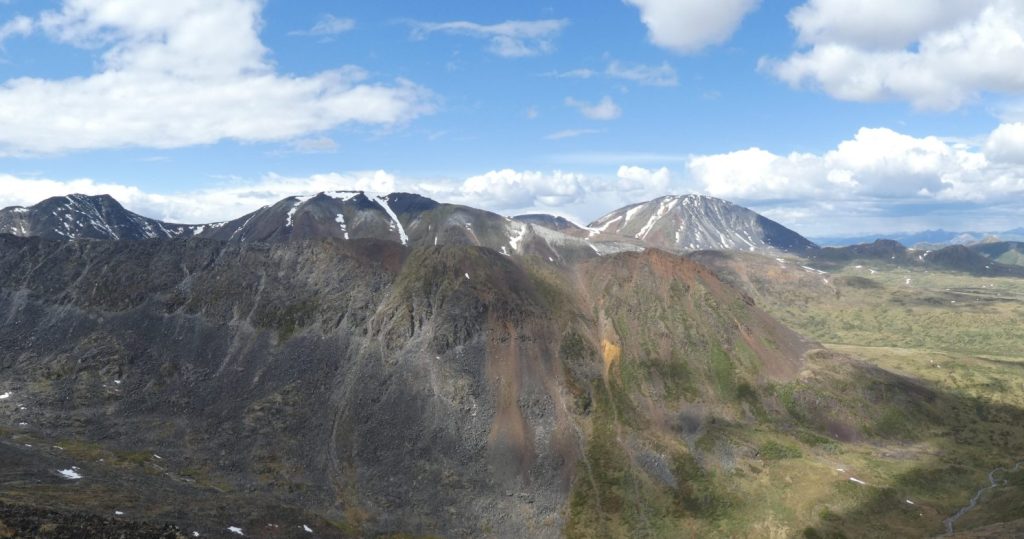Rackla Metals to drill Astro project, Northwest Territories

Rackla Metals Inc. [RAK-TSXV] reported field crews have mobilized to its 100%-optioned flagship Astro project, located in the western Northwest Territories, and is on schedule with plans to commence its maiden 3,000-metre drill program in July.
Highlights: The Astro plutonic complex includes the Astro, Ser and Hit projects and covers approximately 22,500 hectares along the highly prospective Tombstone gold belt within the Yukon and Northwest Territories.
Rackla’s primary target at Astro, the Radio/UV target, benefits from extensive data that have been used to delineate an initial target for exploration. Soil and talus fine sampling revealed a strong gold/bismuth anomaly covering an area over 1,200 metres by 700 metres. High-grade trench results that include up to 30 metres of 17 g/t gold on surface.
Phase 1 drilling will follow up limited historic work where previous operators intersected gold mineralization within the underlying Tombstone intrusive body, a feature that is now believed to be a primary host for mineralization in the district.
Rackla is well under way constructing a road accessible camp on the edge of the Astro claims that will also service the company’s various properties in the Tombstone belt. The diamond drill is scheduled to arrive on the property the first week of July, and field crews will be commencing drill pad construction in the coming days to set up for initial drilling of the Radio/UV target.
The Radio/UV target was discovered by previous operators with a trench that returned 30 metres of over 17 g/t gold and associated strong bismuth in hornfelsed sedimentary rocks overlying a Tombstone suite granitoid. Soil and talus fine sampling throughout the valley below and up the adjacent hillsides defined a strong gold/bismuth anomaly covering an area over 1,200 metres by 700 metres with a significant number of samples running over one g/t gold. Much of this area is underlain by an intrusive stock, and while the previous operator focused on testing the sedimentary rocks, it is the belief of Rackla geologists that it is the intrusive body that is the primary host to the gold mineralization. Initial drilling will test this hypothesis and combined with geological mapping will define any structural controls on the gold mineralization.
At least three intrusive bodies are present in the Astro plutonic complex and geophysics indicates multiple other buried extensions or separate bodies. Rackla believes that these intrusive bodies are the geological feature responsible for the over 100 km2 area exhibiting strong gold in stream anomalies that has attracted previous operators to the region. The company’s research has shown that little to no work has taken place within these intrusive stocks.
The company will also be conducting an airborne geophysical survey and a lidar survey over the entire Astro plutonic complex with extensive boots-on-the-ground mapping and sampling to better understand the geometry of the intrusives and any structural controls on gold mineralization.
Simon Ridgway, CEO, commented: “There is a great deal of anticipation in the team to get on the ground and make discoveries. We are in an area that is prime hunting ground for large gold systems and work by previous operators gives us a road map where to go. It is my belief that much of the ground we will be covering this summer has not seen a rock hammer previously, certainly this drill program will be the first diamond drilling program ever on the Astro intrusive.
“The company continues to acquire prospects in the belt and during the summer 2023 and we will also be advancing our other targets located in eastern Yukon and western Northwest Territories.”
Rackla Metals is targeting RiRGS (reduced-intrusion related gold system) mineralization on the southeastern part of the Tombstone gold belt in eastern Yukon and western Northwest Territories. Management believes that this area, which is underexplored for RiRGS deposit types, has the potential to be the next frontier for its discovery.
